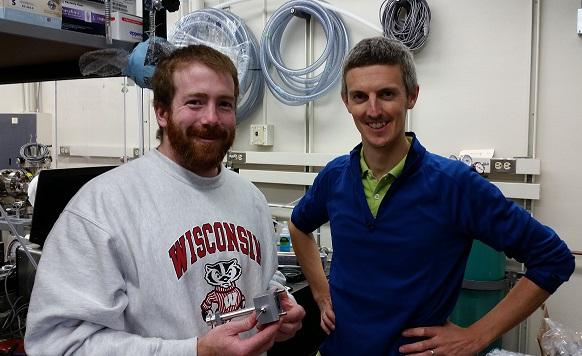Monitoring Air Quality On The Go
Published October 2015
Mobile technology is changing the way we live, work, and communicate. It is also changing the way we monitor air quality. Through EPA's Science to Achieve Results program, EPA-funded researchers at the University of California, San Diego (UCSD) are attempting to develop a high resolution network of optical air quality monitors that can be moved around and placed anywhere to “map” air particles, their concentrations, and related meteorological conditions at the pedestrian level in a neighborhood or on a street, for example.
Tim Bertram conducted the research while at UCSD with Dale Stokes, a colleague, and doctoral student James Brady. Over the past two years, they developed a small optical particle counter about the size of a large cellphone. It runs on the open-source Raspberry Pi hardware, which can transmit data to a remote server via wireless networks.
The device measures sub-micron aerosol particles, the kind that are omnipresent in the atmosphere and can come from either human or natural sources, such as sea spray. Bertram’s team took these units and mounted them on vehicles that crisscrossed the five kilometer-square area of Pacific Beach, a seaside community of San Diego. Their idea was to blanket the region with lots of detectors, which would yield lots of data points. Dr. Tim Bertram (right) and UCSD Ph.D. student James Brady (left) hold the miniature optical particle counter (OPC) developed as part of this project. Bertram is currently an assistant professor of chemistry at the University of Wisconsin, Madison, but he was an assistant professor at UCSD during the experiment.
Dr. Tim Bertram (right) and UCSD Ph.D. student James Brady (left) hold the miniature optical particle counter (OPC) developed as part of this project. Bertram is currently an assistant professor of chemistry at the University of Wisconsin, Madison, but he was an assistant professor at UCSD during the experiment.
Pacific Beach is a confined area with a combination of air pollution sources, according to Bertram. “The natural sources from the ocean, the point sources from commercial areas in Pacific Beach, mobile sources from local traffic, and a large-scale highway on the other side,” he says. “It’s a real nice test bed.”
Bertram and colleagues collected data during the fall of 2014 by driving the vehicles in prescribed grid patterns through the town. Some of their results were surprising.
“You can have several orders of magnitude difference over the scale of hundreds of meters,” he says. “It brings in interesting implications for where people live and their exposure.”
The researchers are continuing to analyze their data. They hope to expand the geographic coverage area and use more sensors. Although the initial five sensors were vehicle-mounted, these air quality monitors can also be hosted on rooftops, and the possibilities look promising.
“This is an aerosol particle counter that is robust and cheap,” Bertram explains. “Instead of having five sensors in a city, you could have 100 or 200 to have continuous, real-time measurements of air quality.”
Learn More:
